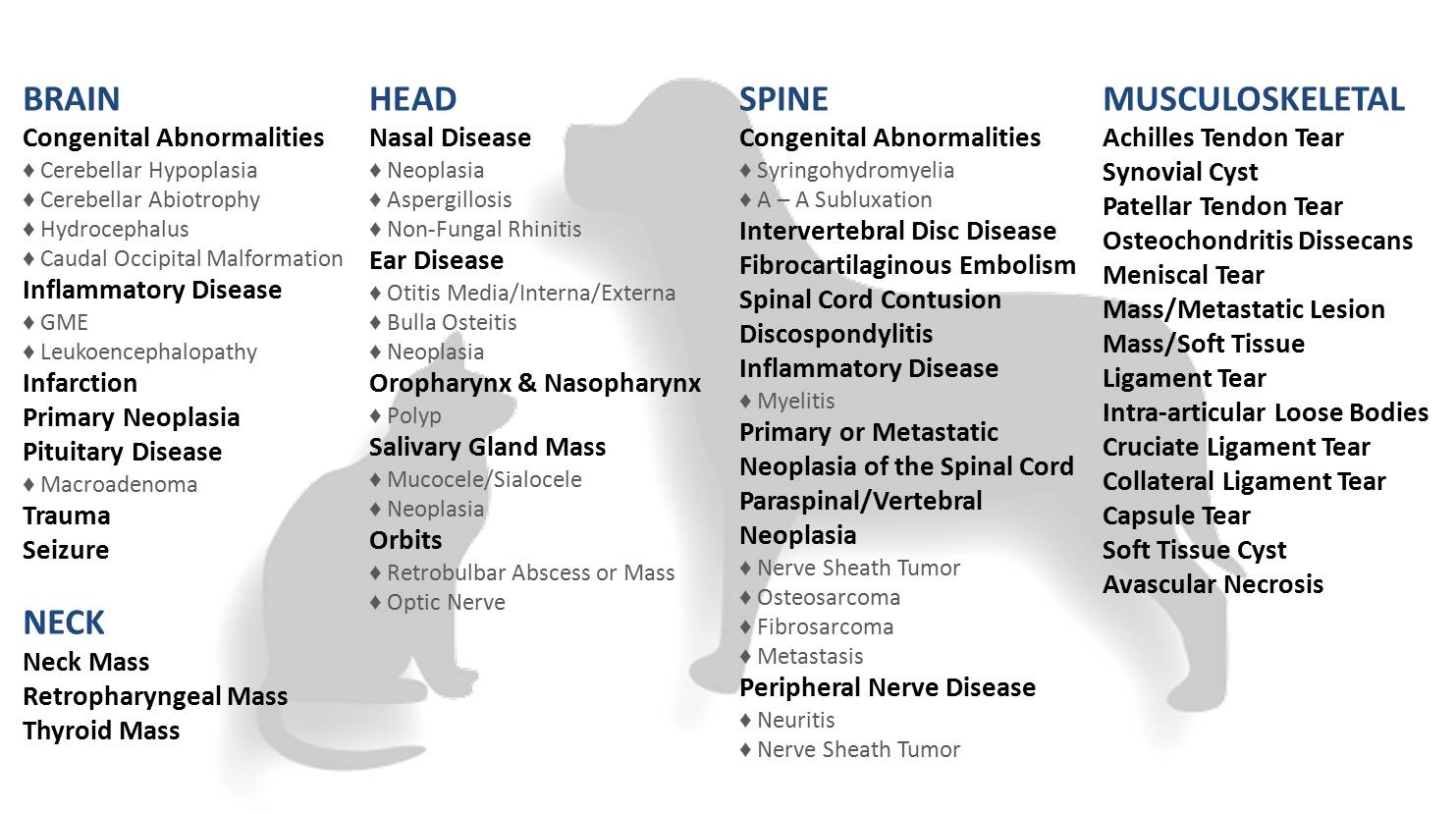About Us
888.784.4445
Recommended Reading
Handbook of Small Animal Imaging Ian Elliott & Geoff Skerritt
Practical Small Animal MRI Patrick Gavin & Rodney Bagley
Atlas of Small Animal CT and MRI Erik Wisner & Allison Zwingenberger
Seizures in Dogs and Cats Sean Sanders
Practical Guide to Canine and Feline Neurology, 3rd Edition Curtis W Dewey (Editor), Ronaldo C. Da Costa (Editor)
BSAVA Manual of Canine and Feline Neurology, 4th Edition Simon Platt (Editor), Natasha Olby (Editor)
A Clinician's Guide: When to Use MRI or CT
by Liz Watson, DVM, MS, Diplomate, American College of Veterinary Radiology Veterinary Imaging
Deciding which cross-sectional imaging modality to pursue first is not always as simplistic as 'CT is best for bone and MR is designed to image soft tissues.' We often need information regarding soft tissue and bone to formulate our clinical plans. Here are a few clinical presentation examples to help guide your decision.
Intracranial disease - In nearly all cases, MR imaging will provide the greatest clinical information. In patients with seizures, cranial nerve deficits, behavior or personality disorders, states of altered consciousness, head tilt, circling, visual deficits related to innervations of the eye, and head and limb ataxia, MR is the preferred imaging modality. MR provides greater... Click here to request a full copy of this comprehensive guide.

Articles
Univ. of Glasgow thesis reports (1 T) MRI noise causes hearing loss and reduced cochlear function in dogs.
by Rebecca Elisabeth Venn
by JJ Cooper, BD Young, JF Griffin, 4th, GT Fosgate, JM Levine
by Martin Konar & Johann Lang
..."a truly quiet animal MR imager would alleviate possible hearing damage for both animal subjects and human operators..."
by Amanda M. Lauer, PhD, Abdel-Monem M. El-Sharkawy, PhD, Dara L. Kraitchman, VMD, PhD and William A. Edelstein, PhD
by Jonathan M. Levine, DVM, DACVIM (Neurology) Texas A&M University
NAVC Clinician's Brief/January 2012/Diagnostics Peer Reviewed
NAVC Clinician's Brief/February 2012/Comparative Imagery - Neurology Peer Reviewed
2017 Animal Imaging Partners 4500 Brookree Road, Suite 300, Wexford, Pennsylvania 15090 1.888.784.4445
In the News
Abstract-Journal of the American Veterinary Medical Assocation February 15, 2015, Vol. 246, No. 4, Pages 447-450
Conclusion: A substantial proportion of dogs > 5 years of age had primary epilespy. Results indicated that lack of abnormalities on neurologic examination does not exclude the possibility of intracranial lesions, and MRI with CSF analysis (when applicable) should be recommended for all dogs with onset of seizures at > 5 years of age.

Resources
Pet Owners
Click Here
The Leader in Veterinary MRI
888.784.4445
AIP-Animal Imaging Partners
Diagnostic Approach to Seizure Cases
courtesy of NeuroWebVet
Clinical Indications for Veterinary MRI



